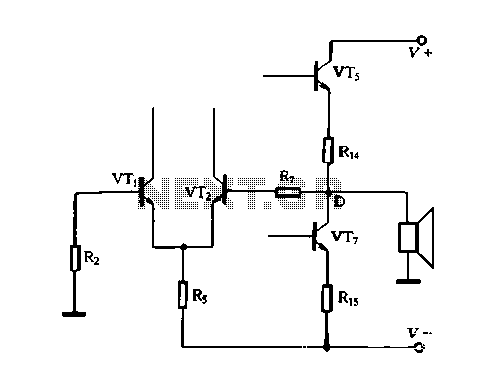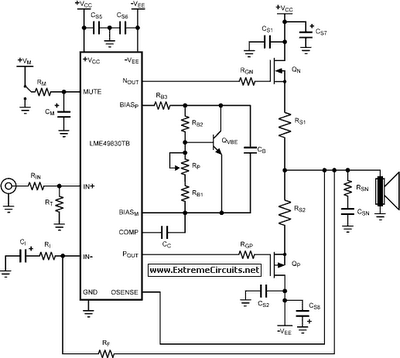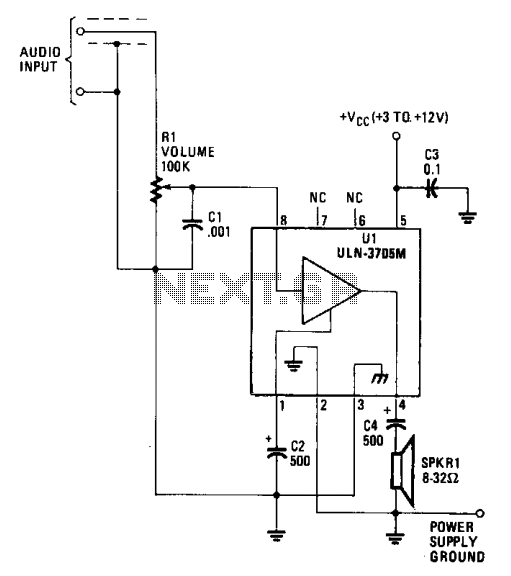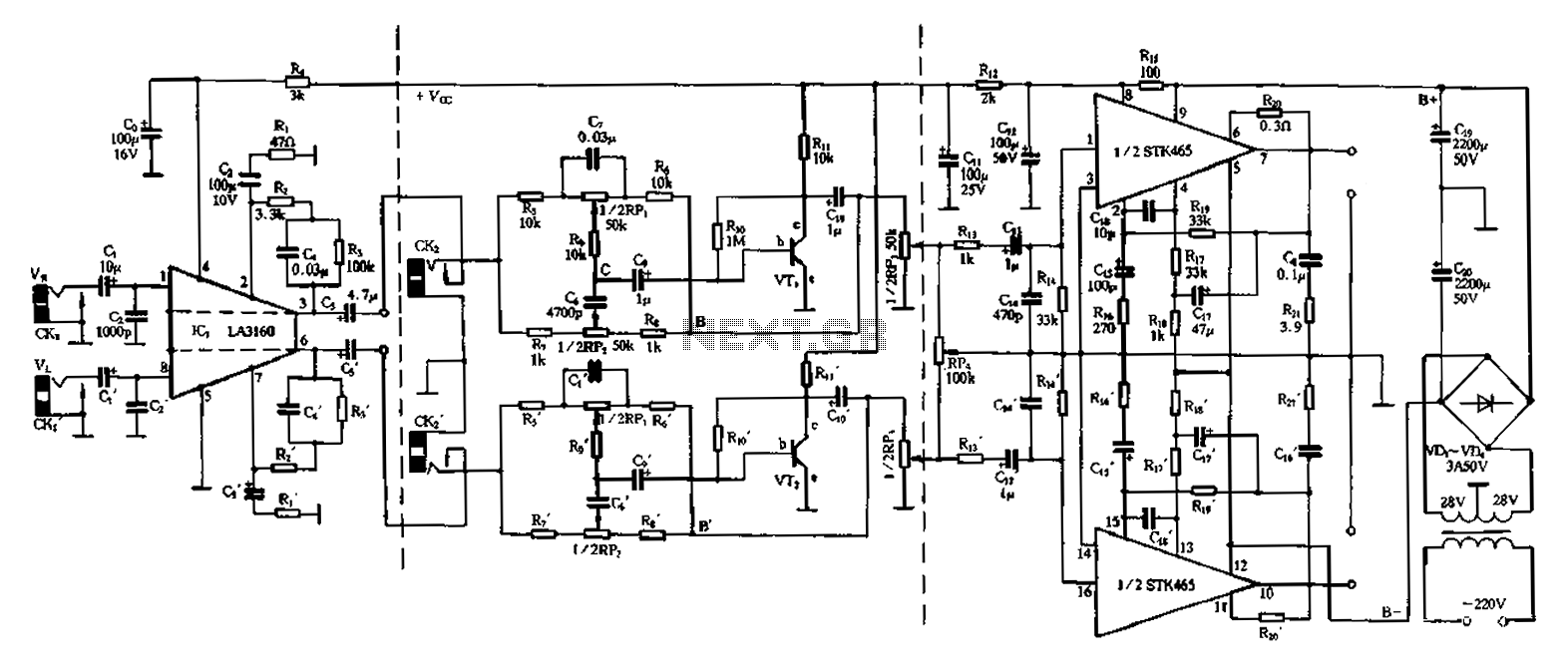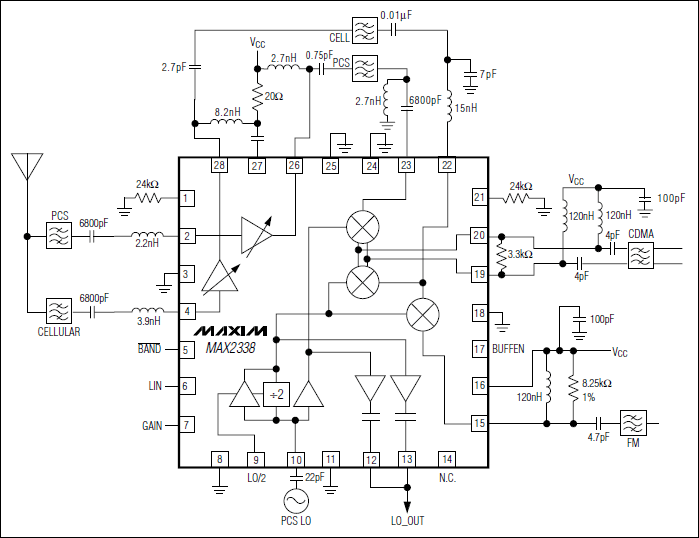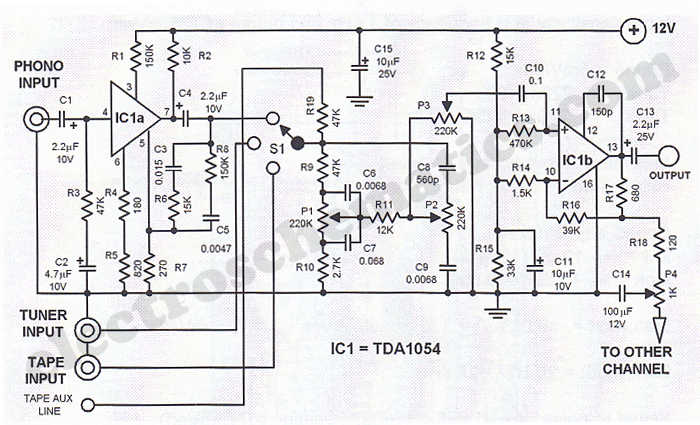
Adjustment-free precision summing amplifier
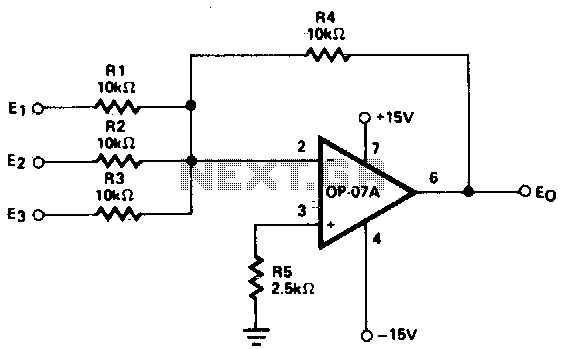
This circuit generates continuous outputs that depend on multiple input variables.
The circuit in question typically employs a combination of operational amplifiers (op-amps), resistors, and potentiometers to achieve its functionality. The outputs can be tailored based on the variations in the input variables, which may include voltage levels or other analog signals.
In a typical configuration, multiple input signals are fed into a summing amplifier configuration, where each input is weighted according to its respective gain set by the resistors. The output of the summing amplifier is then processed through further stages, which may include filtering and amplification, to ensure that the output signal is stable and meets the desired specifications.
For instance, if the circuit is designed to respond to three different input variables, each input would be connected to a dedicated resistor that sets the gain for that particular input. The summing junction of the op-amp will combine these inputs, and the output can be monitored or utilized for further processing.
Additionally, the circuit might incorporate feedback mechanisms to enhance stability and linearity of the output. This could involve using negative feedback to minimize distortion and improve the overall performance of the circuit.
In summary, this circuit effectively translates multiple input variables into a continuous output through careful design and integration of various electronic components, ensuring reliable operation in various applications.This circuit produces continuous outputs that are a function of multiple input variables. Circuit shown 🔗 External reference
The circuit in question typically employs a combination of operational amplifiers (op-amps), resistors, and potentiometers to achieve its functionality. The outputs can be tailored based on the variations in the input variables, which may include voltage levels or other analog signals.
In a typical configuration, multiple input signals are fed into a summing amplifier configuration, where each input is weighted according to its respective gain set by the resistors. The output of the summing amplifier is then processed through further stages, which may include filtering and amplification, to ensure that the output signal is stable and meets the desired specifications.
For instance, if the circuit is designed to respond to three different input variables, each input would be connected to a dedicated resistor that sets the gain for that particular input. The summing junction of the op-amp will combine these inputs, and the output can be monitored or utilized for further processing.
Additionally, the circuit might incorporate feedback mechanisms to enhance stability and linearity of the output. This could involve using negative feedback to minimize distortion and improve the overall performance of the circuit.
In summary, this circuit effectively translates multiple input variables into a continuous output through careful design and integration of various electronic components, ensuring reliable operation in various applications.This circuit produces continuous outputs that are a function of multiple input variables. Circuit shown 🔗 External reference
Warning: include(partials/cookie-banner.php): Failed to open stream: Permission denied in /var/www/html/nextgr/view-circuit.php on line 713
Warning: include(): Failed opening 'partials/cookie-banner.php' for inclusion (include_path='.:/usr/share/php') in /var/www/html/nextgr/view-circuit.php on line 713
